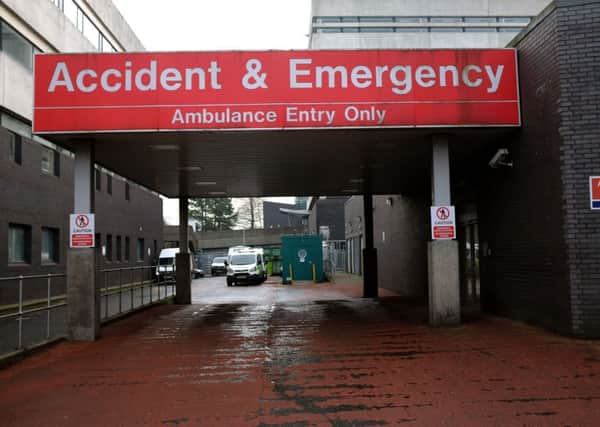Christmas A&E waiting time targets missed in Scotland


The latest figures show that in the week ending December 25, 93.5 per cent of the 22,267 patients who attended were seen and either admitted, transferred or discharged within four hours.
This is below the Scottish Government target for 95 per cent of cases to be dealt with in that time.
Advertisement
Hide AdAdvertisement
Hide AdA total of 75 (0.3 per cent) patients spent more than eight hours in A&E while six patients (less than 0.1 per cent) waited for more than 12 hours.
Separate figures show the target was also missed for the month of November, with 93.6 per cent of 129,233 patients seen within the target time.
Over the month, 730 (0.6 per cent) patients waited for more than eight hours in A&E while 131 (0.1 per cent) were there for more than 12 hours.
The seven health boards that missed the target during the month were NHS Lothian, NHS Lanarkshire, NHS Greater Glasgow and Clyde, NHS Forth Valley, NHS Fife, NHS Dumfries and Galloway and NHS Ayrshire and Arran.
Health Secretary Shona Robison said: “We know that winter brings additional pressures and I would like to thank our dedicated NHS staff for all of the hard work they’ve put in over the festive period.
“Nationally, our emergency departments are still maintaining a high level of performance - in fact, performance for the year to November 2016 is the highest since year ending November 2012.
“Additionally, Scotland’s A&E waiting-times are consistently outperforming other areas of the UK for at least the past 19 months.
“We are working together with hospitals and boards to improve hospital processes to increase the percentage of patients discharged before noon and discharging patients at weekends at the same rate as on weekdays, and strengthen community capacity to reduce delayed discharges.”